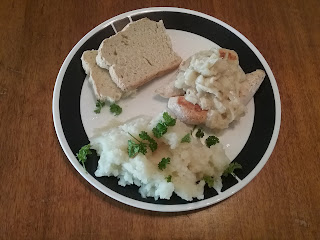The problem was that the sleeves were too short by an inch or two. It was wearable, but any sort of arm extension would leave the cuffs tight below the wrist, and putting strain on the side seams below the gussets. Unfortunately, I really like how the buttons and cuffs turned out, so lengthening the sleeve ended up looking like:
- Remove sleeve from smock.
- Remove gusset from sleeve.
- Piece 3" strip of linen to upper sleeve (and fell the seam; piece width includes extra allowance for felling).
- Reattach gusset to longer sleeve and close the extra underarm seam length (and fell the seams).
- Reattach sleeve to smock (and fell the seams).
- Take apart the side-seam at the same time, and re-do it with proper felling so the allowances stop fraying.
- Decide that the collar pulls weird, and add the shoulder gussets omitted last time.
- Piece neckband to fit the larger opening.
- Realize the neck is now too large, revert to earlier size, but add small tucks to ease the fabric.
- Make new thread loop fastener, replace broken thread reinforcement at center front slit.
 |
| I'm more excited for this shift than I probably should be. |
The process ended up more involved than it's appearance would suggest, but it's now more comfortable and fits better (and hand-sewing linen is always a treat). I think the most surprising thing was how large and awkward the collar stitches looked to me as I was undoing them--my default stitch to reattach the collar was about half the length of the previous work.

